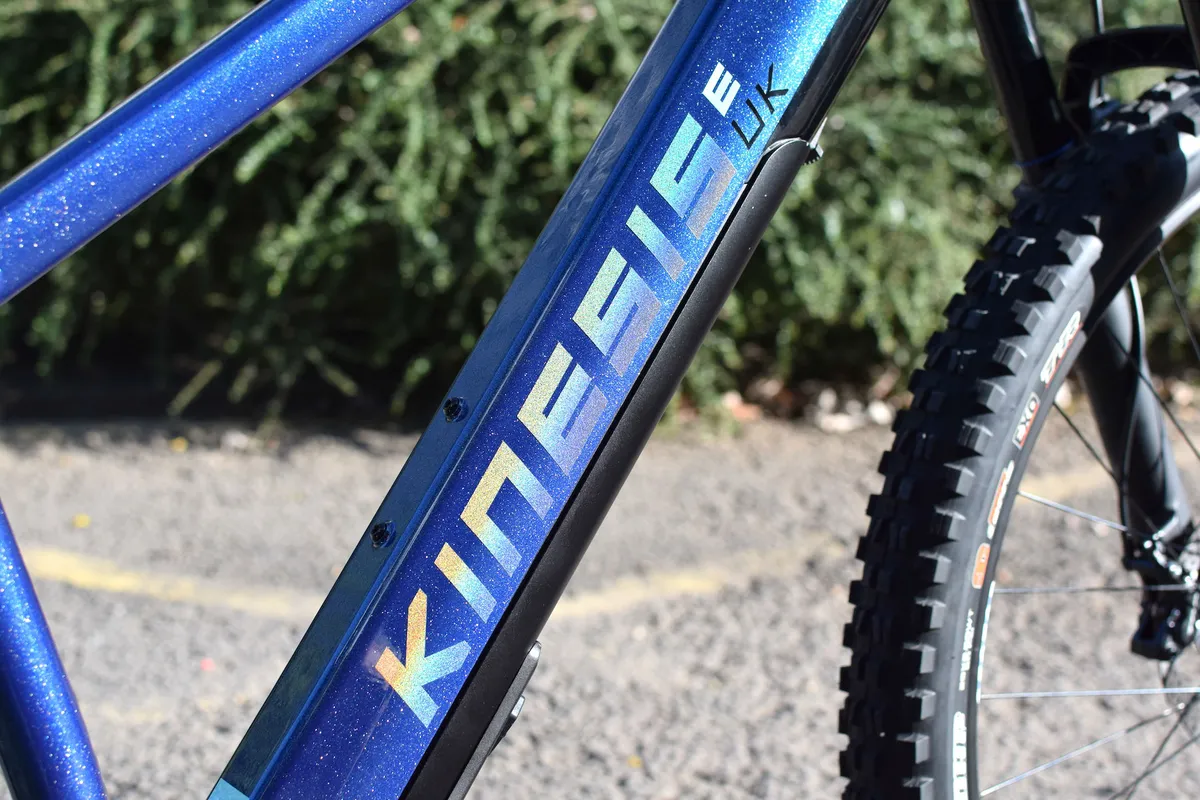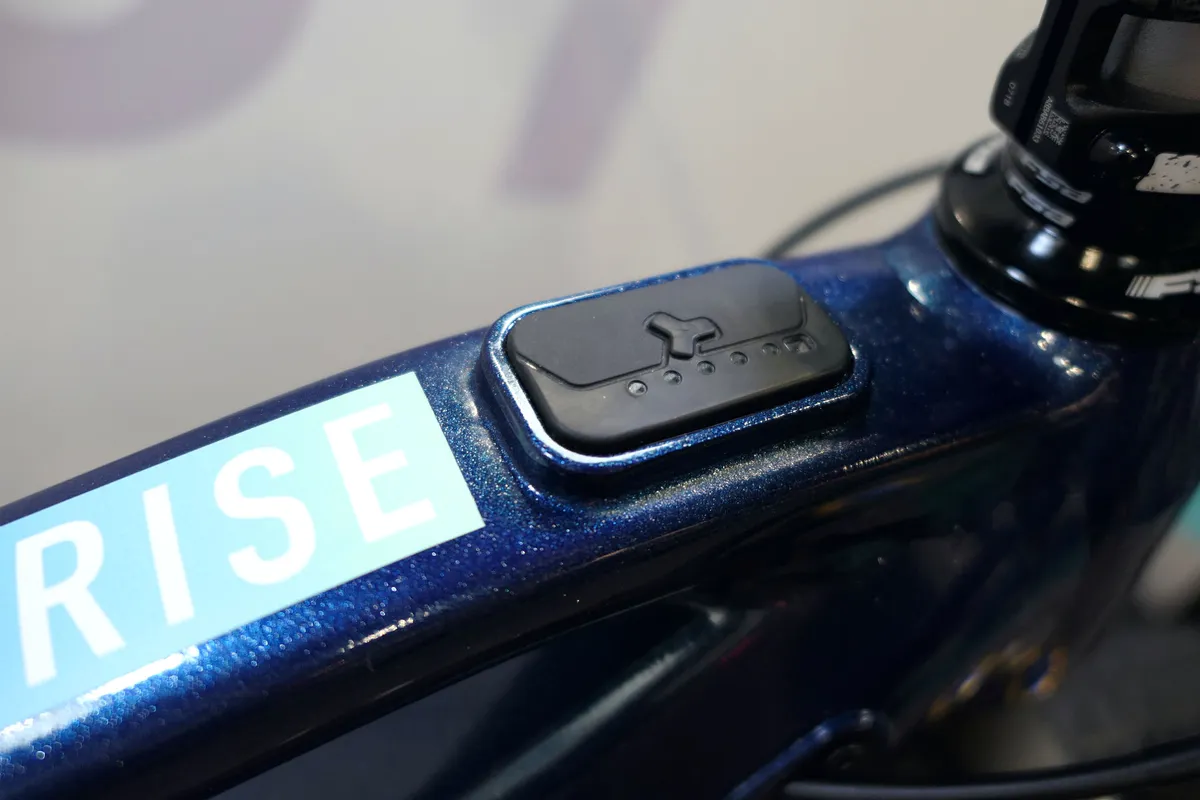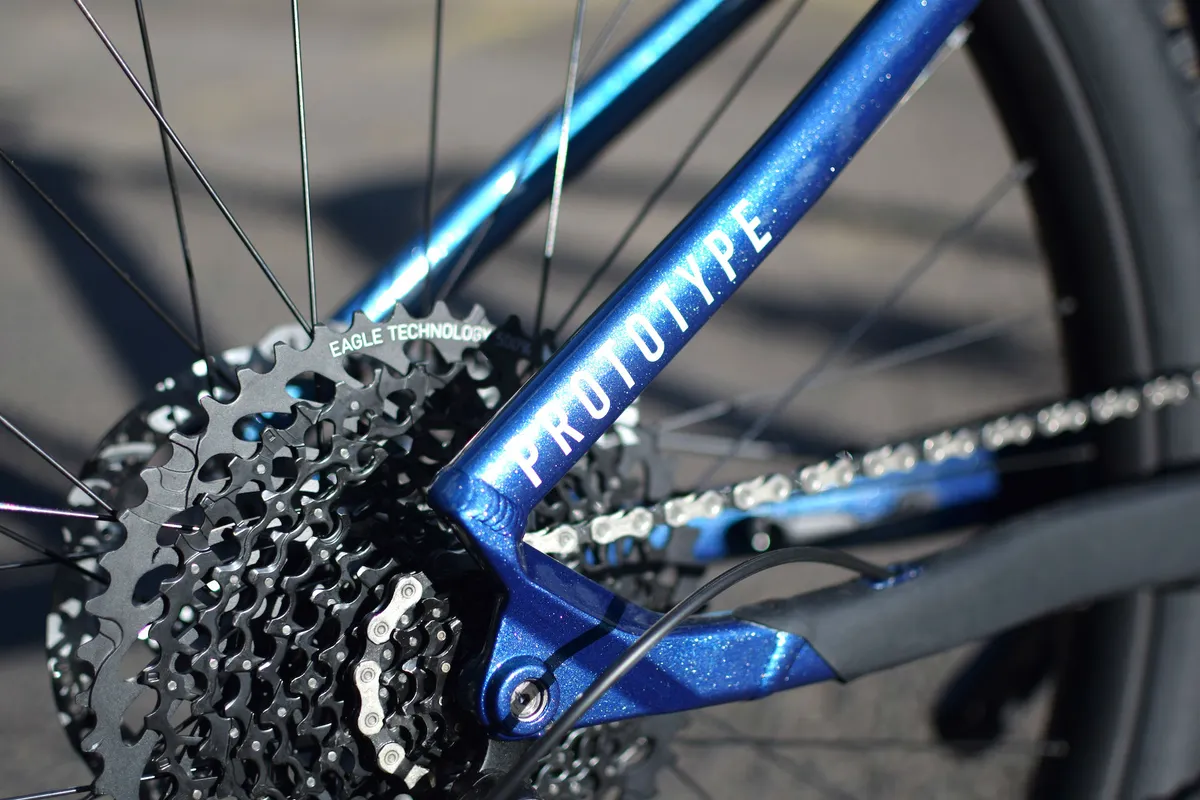Kinesis has launched its first e-bike, with the Rise entering the fray at The Cycle Show as an aluminium hardtail with a Fazua motor, 29-inch wheels and progressive trail geometry.
Electric bikes have dominated the two trade shows of early autumn – Eurobike and The Cycle Show – but typically fall into one of three categories: road, commuter/utility and full-suspension.
It’s rarer to see a properly sorted trail hardtail with a motor, but Kinesis is a brand that has long tapped into the British fascination with hardtails, so it’s no surprise to see the Rise emerge as the Sussex-based brand’s first e-bike. (Interestingly, however, Kinesis says an electric gravel bike is also in development, with an expected launch date of January 2020.)
“We have a fascination with hardtails,” says Kinesis UK’s Tom Catton. “This is a bike for people who are curious about e-bikes but who don’t want to lose that elemental sense of mountain biking – riding singletrack, hitting berms and doing drops – or if you ride with faster people and want a leveller, but at the same time it’s not too powerful.”
- Best electric bike: 12 e-bikes you should be considering
- Cycle Show 2019 highlights | New bikes from Condor, Shand, Vielo, Ribble and Genesis
Kinesis Rise key details and tech specs
- Kinesis’ first electric bike
- Trail hardtail with a reach-focused geometry
- Fazua motor and battery system
- Claimed range of approximately 55km / 1,000m of elevation
- Shimano SLX (£3,200) and SRAM GX Eagle (£3,500) build options
- Available from December 2019

Fazua motor for ‘natural’ assistance
A Fazua drive system with a 400W motor and a 250Wh battery sits at the heart of the Rise, chosen over more powerful systems due to its low weight and natural, progressive assistance, according to Catton.
“The Fazua system is very natural,” he says. “You still retain the playful qualities of a mountain bike.”
The system offers three modes: Breeze (up to 125 watts of power), River (up to 250 watts) and Rocket (up to 400 watts). The Rise has a range of approximately 55km or 1,000m of ascent using mixed modes, according to Kinesis, and you can change modes using the neatly integrated top tube unit, as opposed to a rudimentary control on the handlebar.
The one-piece battery and motor can also be removed from the down tube and replaced with a blanking plate if you want to run the Rise as a conventional hardtail, although Catton admits that’s unlikely.
Claimed weight for the Rise is 18.9kg with the Fazua system in place and 16kg without.

Reach-focused trail geometry
The Rise has also seen Kinesis follow the likes of Specialized in adopting a reach-focused approach to geometry, with the four sizes available labeled as L1, L2, L3 and L4.
The progressive geometry combines a long reach with a short seat tube and XL dropper post, giving buyers more flexibility in choosing a bike to match their fit or riding style, according to Catton.
“It’s important that a hardtail has really good geometry,” he says. “We’ve focused on pushing a long bike and a short seat tube, so there’s flexibility about how you size it up. If you’re an old-school rider who likes a short bike, you can go smaller, but if you want a longer bike, the seat tube is small enough to allow that.”
To take an L3 bike as an example, you’ll find a 485.2mm reach, 440mm seat tube and 170mm dropper post (a 150mm post is used on the L1 bike). Head tube and seat tube angles are 66.7 degrees and 75.5 degrees across all sizes, keeping things relatively slack at the front-end and aiming to ensure the Rise remains a capable climber through the rear.

Kinesis Rise specs, pricing and availability
The Rise will be available in two builds, with a SRAM GX Eagle 12-speed drivetrain for £3,500 and Shimano SLX 11-speed parts for £3,200.
Both builds will share TRP Slate T4 brakes, an FSA crankset, a X-Fusion E-Slide 34 130mm fork, Sector 9E E-Specific wheels and 2.5-inch Maxxis DHF/Aggressor front/rear tyres.
The SRAM bike gets an FSA cockpit, while the more affordable Shimano machine gets Kinesis own-brand parts.
The ‘galactic blue’ paint featured on the prototype displayed at The Cycle Show will carry through to production bikes – and it is very nice indeed.
The Rise will be available to pre-order in October, with delivery expected in December.
Kinesis Rise sizes and geometry
Kinesis Rise L1
- Reach: 436.6mm
- Seat tube: 400mm
- Head tube angle: 66.7 degrees
- Seat tube angle: 75.5 degrees
- Head tube length: 120mm
- Stack: 634.4mm
Kinesis Rise L2
- Reach: 461mm
- Seat tube: 415mm
- Head tube angle: 66.7 degrees
- Seat tube angle: 75.5 degrees
- Head tube length: 120mm
- Stack: 634mm
Kinesis Rise L3
- Reach: 485.2mm
- Seat tube: 440mm
- Head tube angle: 66.7 degrees
- Seat tube angle: 75.5 degrees
- Head tube length: 125mm
- Stack: 639mm
Kinesis Rise L4
- Reach: 510mm
- Seat tube: 465mm
- Head tube angle: 66.7 degrees
- Seat tube angle: 75.5 degrees
- Head tube length: 140mm
- Stack: 653mm
